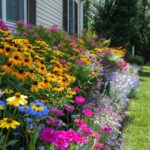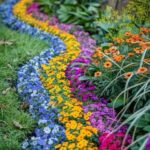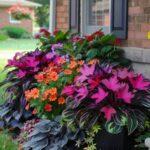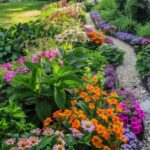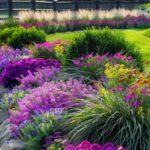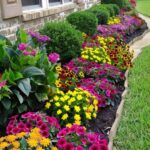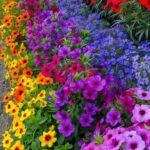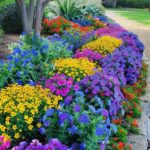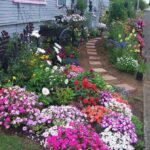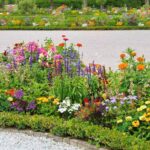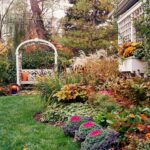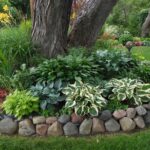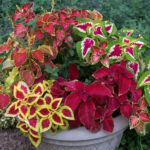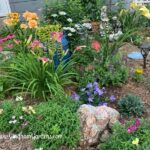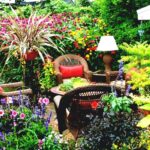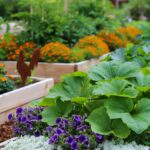Garden Design with Flowers: Creating a Floral Masterpiece
Designing a garden with flowers is a creative and rewarding process that can turn any outdoor space into a vibrant and serene retreat. Whether you have a sprawling yard or a small urban plot, incorporating flowers into your garden design can enhance its beauty, attract wildlife, and provide a sensory delight. Here’s how to create a stunning flower garden that flourishes through the seasons.
Planning Your Flower Garden
Evaluate Your Space
Begin by assessing your garden’s conditions. Observe the amount of sunlight different areas receive, the type of soil present, and the local climate. These factors will guide your choice of flowers and their placement to ensure they thrive.
Define Your Style
Determine the overall style and mood you want to create. Some popular garden styles include:
- Cottage Garden: An informal, dense planting of various flowers and herbs, creating a charming and slightly wild look.
- Formal Garden: Symmetrical layouts with neatly trimmed hedges and well-defined flower beds.
- Modern Garden: Clean lines, minimalistic design, and a focus on architectural plants and striking flower colors.
- Tropical Garden: Lush greenery and vibrant, exotic flowers that create a paradise-like feel.
Create a Layout
Draft a layout of your garden space. Include the locations of flower beds, pathways, seating areas, and any other features you plan to incorporate. Consider how you’ll move through the garden and how different areas will interact visually.
Choosing Flowers
Perennials vs. Annuals
- Perennials: These flowers return year after year, offering a stable foundation for your garden. Examples include hydrangeas, daylilies, and echinacea.
- Annuals: These flowers complete their life cycle in one season, providing bright, seasonal color. Examples include petunias, marigolds, and cosmos.
Color Scheme
Select a color palette that aligns with your garden style and personal preferences. Harmonious color schemes (colors next to each other on the color wheel) create a calming effect, while contrasting schemes (colors opposite each other) provide a vibrant, dynamic look.
Native Plants and Pollinators
Incorporate native plants to support local wildlife and ensure your garden is sustainable and low-maintenance. Additionally, choose flowers that attract pollinators like bees, butterflies, and hummingbirds to enhance biodiversity.
Design Elements
Flower Beds and Borders
Define your flower beds with clear borders using materials like bricks, stones, or metal edging. Raised beds can add height and structure to your garden. Mix different heights, textures, and colors to create visual interest and depth.
Pathways and Walkways
Design pathways to guide visitors through your garden. Use materials like gravel, stepping stones, or brick to complement your garden’s style. Flank paths with low-growing flowers or ground covers to create a seamless transition between different areas.
Water Features
Incorporate a water feature such as a fountain, pond, or birdbath. The sound of water adds tranquility, and water features can become focal points that enhance the overall aesthetic of your garden.
Seating Areas
Create inviting seating areas where you can relax and enjoy your garden. Benches, swings, or simple chairs nestled among fragrant flowers like lavender, roses, or gardenias can provide a peaceful retreat.
Planting and Maintenance
Soil Preparation
Prepare your soil by testing its pH and nutrient levels. Amend the soil with compost or organic matter to improve its fertility and structure, ensuring a healthy environment for your flowers.
Planting Techniques
Follow proper planting techniques, considering the mature size of each plant to avoid overcrowding. Group plants with similar water and sunlight needs together to simplify care and maintenance.
Watering and Mulching
Water your garden consistently, especially during dry spells. Mulch helps retain moisture, suppress weeds, and regulate soil temperature. Organic mulches like bark or straw also enhance soil health over time.
Pruning and Deadheading
Regularly prune and deadhead your plants to encourage new growth and prolonged blooming periods. This practice also helps maintain a tidy and attractive garden.
 Flower Love
Flower Love
